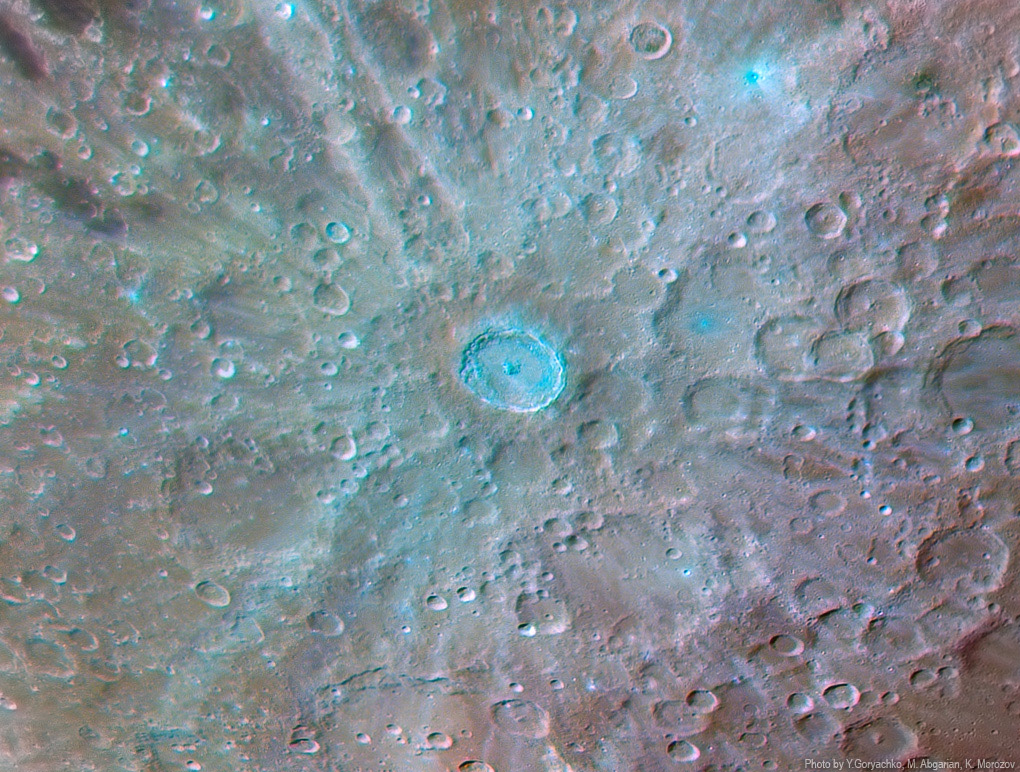February 9, 2018
What? More Tycho?
Originally published August 30, 2008

image by Yuri Goryachko, Mikhail Abgarian & Konstantin Morozov, Minsk, Belarus
After yesterday's extraordinary Tycho it would seem unnecessary to feature that crater on another LPOD for a long time. But Yuri and the Minsk Miracle Imagers have provided yet another perspective that adds new information and maybe understanding. The image is a composite of separate views taken through ultraviolet, green and near infrared filters. Where blue is conspicuous it means that the surface materials are bright in the ultraviolet. Young pulverized material appears as a dusky blue, with Tycho's central peaks and parts of the inner walls being intensely blue. Similar deep blueness appears at Cassini's Spot, a very bright fresh crater in Deslandres (upper right) and a smaller crater in Orontius. And Tycho's rays are a paler blue, tending to white. Yesterday's high resolution view showed a highly-textured lip of material just outside the northern rim of Tycho, that quickly gives way to smoother ejecta. The distribution of the highly textured material closely matches that of the blue material beyond Tycho's rim. This does not look like fresh pulverized material - perhaps the blue represents a compositionally different material. Another type of feature conspicuous in this color composite are darker regions. A somewhat vague one is the famous dark annulus around Tycho. This area is completely undistinguished on the low Sun image - it is impact melt glass that has low reflectivity. Another dark feature - one that I hadn't noticed before - is the odd dark-halo crater on the floor of Walter in the upper right corner. The Clementine multispectral view makes this feature look even more unusual - worthy of further investigation.
Chuck Wood
Technical Details
19th August, 2008, 22:15UT. Maksutov-Cassegrain Santel D=230 mm F=3000 mm. Filters: UV (Optec Bessel U, 340-395 nm), Astronomik Green, Astronomik Planet IR Pro (IR-pass 807 nm+). Unibrain Fire-i 702 CCD b/w camera,(IEEE-1394, 1388x1040, 10fps, 12bit). Processing in Registax & Maxim DL. LRGB. Seeing 5/10, Trans 5/5. The image of Tycho is L (IR) R (IR) G (G) B (UV). NIR (most sharp) is taken as the luminance channel.
Related Links
Rükl plate 64
Minsk Miracle Imagers website
Yesterday's LPOD: Who Says You Can't Have It All?
Tomorrow's LPOD: Seeing & Reporting Thin Crescents
COMMENTS?
Register, Log in, and join in the comments.



